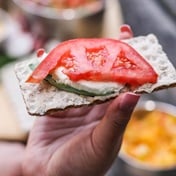
- South African researchers bought 116 food items and compared their nutrient density to what they cost.
- Vegetables and fruits topped the nutrient index – but they were also the most expensive.
- Pulses such as lentils and sugar beans were the runaway winners when it came to nutrition value per rand.
Food prices are roaring ahead of inflation, which means new research on getting the best nutritional bang for your buck has come at exactly the right time.
Scientists at the South African Medical Research Council (MRC) and the University of the Western Cape evaluated more than 100 food items from supermarket shelves and the winner is … pulses.
Lentils, sugar beans, and split peas have the highest nutritional value per rand of any of the products the researchers monitored at Shoprite, Pick n Pay, and Checkers.
Bottom of the league are fats, oils, foods high in fat and sugar, and food and drinks high in sugar.
A 2003 government decision to improve nutrient intake by fortifying maize meal and bread flour with vitamin A, riboflavin, niacin, pyridoxine thiamine, folic acid, iron and zinc has paid off, the scientists say in the Journal of Nutritional Science.
“These fortified staple foods, which are widely consumed in South Africa, had the best nutritional value per cost within the starchy food group,” they say.
“Starchy foods overall had the lowest energy cost … but excessive consumption of these high energy refined starches may lead to overweight and obesity.”
Food inflation reached 12.4% in December, according to Statistics SA, way ahead of the 7.2% overall inflation rate. For oils and fats, the inflation rate was 22.4%, and for bread and cereals it was 20.6%.
“The core food basket for low-income women consists mainly of starches (maize meal, rice, cake flour, bread), white sugar, vegetable oil, sugar beans and chicken, tea and condiments, and is not nutritionally balanced,” say the researchers.
“Low-income groups often rely on cheaper, energy-dense foods high in saturated fats, trans fats and added sugar, which put them at greater risk of becoming overweight/obese and developing diet-related non-communicable diseases (NCDs), and therefore food prices are a major contributor to inadequate diets and malnutrition.”
How to rate food the scientific way
The researchers created a 116-item food checklist based on health department dietary guidelines and made sure it included products commonly consumed in poor households as well as raw food, prepared food and fortified products.
They used the MRC food composition database to evaluate the nutritional value of the amount of each food required to provide 100 kilocalories of energy.
Their analysis focused on protein, fibre and seven nutrients that are low in the diet of South African adults: vitamin A, vitamin D, folate, iron, zinc, calcium and vitamin B6.
“Pulses had the best nutritional value per cost across all food groups,” said the team led by nutritionist Samukelisiwe Madlala from the MRC non-communicable diseases research unit.
“These foods are good sources of carbohydrates, protein, fibre and several micronutrients including iron, magnesium and potassium. Pulses may be beneficial in preventing and managing NCDs as they can potentially reduce the risk of obesity and certain cancers.
“Since pulses have a much lower cost per 100 kcal in comparison with animal protein sources and have a higher nutrient density relative to cost, they would be a good protein substitute and would be a more affordable choice for low-income consumers.”
After pulses and fortified starches, the foods offering the best nutrition value per rand are dairy products, vegetables and fruits, and the group containing fish, chicken, meat and eggs, particularly chicken giblets, eggs, pilchards and low-fat fish.
Vegetables and fruits – particularly carrots, butternut and orange-fleshed sweet potato – had the highest nutrient density of the foods tested, but the researchers say: “Generally, vegetables and fruits are reported to be expensive. Although they are VAT zero-rated, cost prevents consumption of these foods among low-income households.
“The South African population consumes less than half of the World Health Organisation recommended daily intake of 400g for the prevention of cardiovascular diseases and some types of cancers. Low-income consumers are concerned about getting the most kilojoules per unit cost, and it may therefore be difficult to advise them to eat more vegetables and fruits.”
The researchers said they were concerned by the low cost of the least nutritious fatty and sweet foods in their survey, because of the weight gain and possible diabetes that follows over-consumption.
“People tend to consume foods that they can afford to purchase,” they say. “Besides being cheaper, unhealthy foods are often convenient and highly palatable compared with healthier foods which often require preparation skill and are less palatable.
“A healthier diet is often unaffordable for the majority of the South African population.”




 Publications
Publications
 Partners
Partners











